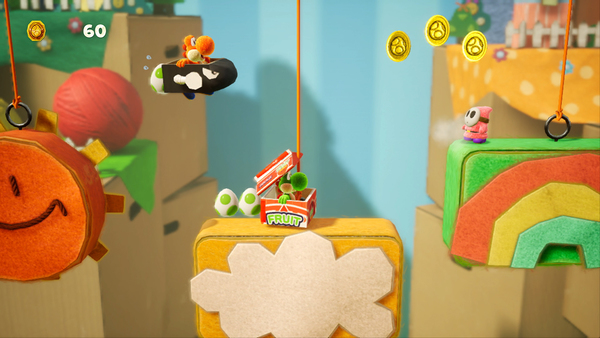Dear Reader:
Yoshi's Crafted World's flip-side mechanic was decided before the game's visuals were
Yoshi's Crafted World certainly stuns with its visuals, and there's no doubt a lot of time went into them. With that said, the game's visuals weren't the first thing the dev team decided on. In an interview with IGN, Etsunobu Ebisu, Executive Vice President of Good-Feel Co., Ltd., explained what came first and why.
We had the idea of creating “flip sides” of the stages from the very beginning. This was something we’d decided on even before we gave the game world its “crafted” motif.
When the topic of creating a Yoshi title for Nintendo Switch first came up, I started thinking about how best to introduce the world to a traditional series like Yoshi, for a system with such a new concept. Nintendo Switch is a console that’s fun to play on your own, but is also fun to take outside and play with your friends.
So, what should that mean for a Yoshi game on Nintendo Switch? The Yoshi series has traditionally featured 2D action games where Yoshi clears stages by proceeding from left to right. When we thought of playing that type of game with other people, we wondered if we could create a new style of gameplay by having players line two Nintendo Switch systems up back to back and play that way. That was our first idea. The two players would be playing the front side and flip side of the same stage, and so they’d each be seeing different things. We thought this would encourage players to communicate about what they were seeing on their respective sides of the stage, and that this would be a new type of multiplayer experience.
Once we started considering the motif that would fit best with this concept, we landed on the idea of a “crafted” look. Viewing crafts from their flip sides would let you see how they were put together, and then the communication between the front and back side players would become part of the gameplay strategy. However, we wanted to make sure that this game would be fun to play in single-player mode as well. This was when we decided on a strategy of making sure the front side stages were really well thought out, and that the flip sides of those stages would then add to their value. We ended up having to leave behind our idea for simultaneous front and flip side co-op play as a result, but playing through the flip side of stages you’ve already cleared adds to the fun by increasing replayability, and underscores the crafted nature of the game world. We also implemented multiplayer with the same ideas in mind.
